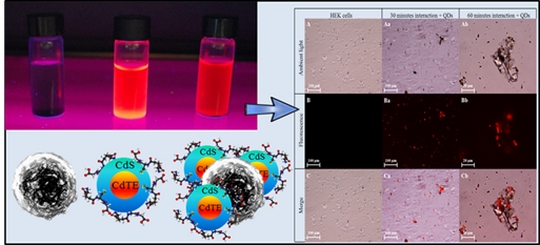

Průměrný učitel vypráví. Dobrý učitel vysvětluje. Výborný učitel ukazuje. Nejlepší učitel inspiruje.
Charles Farrar Browne
Výzkum
Yew poisoning of olive baboons (Papio anubis) in captivity: laboratory diagnosis
 There are 9 species of yews (Taxus spp.) planted for their ornamental qualities in parks around the world. The most common ones include Taxus baccata, T. canadensis, T. brevifolia, T. media, T. capitata and T. cuspidata (Vaningen et al. 1992). Apart from the ornamental usage, yews are also used in pharmaceutical industry (Li et al. 2009). Signs of toxicity include dizziness, nausea, abdominal pain, cardiotoxicity (tachycardia later followed by bradycardia), dyspnea, muscle tremors, convulsions and unconsciousness. Severe toxicity often results in a fatal outcome (Panzeri et al. 2010).
There are 9 species of yews (Taxus spp.) planted for their ornamental qualities in parks around the world. The most common ones include Taxus baccata, T. canadensis, T. brevifolia, T. media, T. capitata and T. cuspidata (Vaningen et al. 1992). Apart from the ornamental usage, yews are also used in pharmaceutical industry (Li et al. 2009). Signs of toxicity include dizziness, nausea, abdominal pain, cardiotoxicity (tachycardia later followed by bradycardia), dyspnea, muscle tremors, convulsions and unconsciousness. Severe toxicity often results in a fatal outcome (Panzeri et al. 2010).
 The toxicity is due to the content of cyanogenic glycosides and a mixture of alkaloids known as taxines. Taxine B (monohydroxy-monoacetyl-taxine) or isotaxine B is probably responsible for the most part of adverse effects in poisoned organisms (Ruha et al. 2002), (Wilson et al. 2001), (Kite et al. 2000). These effects are to a lesser degree accompanied by action of 1-deoxytaxine B, 1-deoxyisotaxine B and pseudoalkaloids of taxine B (13-deoxo-13?-acetyloxy-taxine B, 13-deoxo-13?-acetyloxy-1-deoxytaxine B and 13-deoxo-13?-acetyloxy-1-deoxy-nortaxine B). Taxine A is another important toxin present in yew plants (Wilson et al. 2001). Paclitaxel (taxol A) and its analogues, employed in chemotherapy, are not less important from the toxicological point of view (Jenniskens et al. 1996). Apart from the above-mentioned substances, it is possible to quantify 10-deacetyltaxol, baccatin III, 10-deacetylbaccatin III, cephalomannine (taxol B), 3,5-dimethoxypheno- and triacetyl-taxine in body fluids of yew-poisoned animals and humans (Grobosch et al. 2012), (Grobosch et al. 2013). Metabolites of these substances can be found in blood, bile, faeces and urine (Monsarrat et al. 1998), (Shibasaki et al. 2012).
Two olive baboon cage mates (a ten-year old male and a six-year old female) were found dead on 30th October 2006. The night before had been windy and the floor was full of scarlet-aril-covered seeds that had fallen down from a tree (Taxus baccata) growing above the cage. Accidental yew poisoning was suspected because of the sudden death associated with the presence of yew seeds in the cage.
Considering the history of the case and the suspicion of yew poisoning in captive baboons, necropsy and laboratory analysis of body fluids was performed to diagnose the mortal cause in the present study.
The toxicity is due to the content of cyanogenic glycosides and a mixture of alkaloids known as taxines. Taxine B (monohydroxy-monoacetyl-taxine) or isotaxine B is probably responsible for the most part of adverse effects in poisoned organisms (Ruha et al. 2002), (Wilson et al. 2001), (Kite et al. 2000). These effects are to a lesser degree accompanied by action of 1-deoxytaxine B, 1-deoxyisotaxine B and pseudoalkaloids of taxine B (13-deoxo-13?-acetyloxy-taxine B, 13-deoxo-13?-acetyloxy-1-deoxytaxine B and 13-deoxo-13?-acetyloxy-1-deoxy-nortaxine B). Taxine A is another important toxin present in yew plants (Wilson et al. 2001). Paclitaxel (taxol A) and its analogues, employed in chemotherapy, are not less important from the toxicological point of view (Jenniskens et al. 1996). Apart from the above-mentioned substances, it is possible to quantify 10-deacetyltaxol, baccatin III, 10-deacetylbaccatin III, cephalomannine (taxol B), 3,5-dimethoxypheno- and triacetyl-taxine in body fluids of yew-poisoned animals and humans (Grobosch et al. 2012), (Grobosch et al. 2013). Metabolites of these substances can be found in blood, bile, faeces and urine (Monsarrat et al. 1998), (Shibasaki et al. 2012).
Two olive baboon cage mates (a ten-year old male and a six-year old female) were found dead on 30th October 2006. The night before had been windy and the floor was full of scarlet-aril-covered seeds that had fallen down from a tree (Taxus baccata) growing above the cage. Accidental yew poisoning was suspected because of the sudden death associated with the presence of yew seeds in the cage.
Considering the history of the case and the suspicion of yew poisoning in captive baboons, necropsy and laboratory analysis of body fluids was performed to diagnose the mortal cause in the present study.
Podpořeno projekty: ASPEKTY MSMT 6215712402
Plakáty k výzkumným směrům
Dokumenty pro VaV aktivity
Výzkumný záměr
Hodnocení výzkumných aktivit
Archív
23— 2013
22— 2013
21— 2013
20— 2013
19— 2013
18— 2013
17— 2013
16— 2013
15— 2013
14— 2013

 | Zemědělská 1/1665 613 00 Brno Budova D | Tel.: +420 545 133 350 Fax.: +420 545 212 044 |  |
 |





